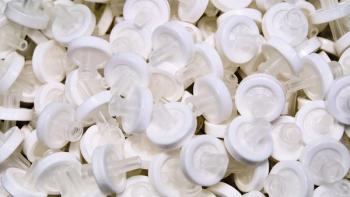
- BioPharm International-11-01-2014
- Volume 27
- Issue 11
Viral Clearance Challenges in Bioprocessing
Challenges remain for virus removal and validation.
Removal and inactivation of adventitious and endogenous viruses have traditionally been achieved during the downstream purification of biologics. Viral clearance is assessed in small-scale tests, and regulatory guidance documents provide a general framework for how these tests should be performed (1). Even with guidance, however, demonstrating an appropriate level of viral clearance can be challenging for biologics manufacturers.
Upstream viral clearance
Using media with a low level of viral contamination can lead to major problems in biologics manufacturing. Cell-culture media and other raw materials, particularly those derived from animals, should be subjected to rigorous testing and viral inactivation treatments, according to S. Steve Zhou, director of virology and molecular biology with the MicroBioTest Division of Microbac Laboratories. In addition to treatment with heat and ultraviolet radiation, virus retentive filtration is recognized as one of the most efficient and robust virus removal steps, and implementation in the media feeding process could decrease the risk of contamination significantly, according to Horst Ruppach, senior director, viral clearance with Charles River Biologics Testing Solutions. “Current filters can be used in this application, but they were not designed to run under continuous and high throughput conditions like those required for media supply,” he observes. Filter vendors are currently being asked to modify the filter design for this specific approach. Viral clearance studies will also need to be designed differently in order to address the specific conditions associated with media supply, Ruppach adds.
Facility design and process monitoring
Conditions throughout the commercial manufacturing process must be constantly monitored to avoid viral contamination events. One major concern for biologics production is the entry of a small, non-enveloped, chemically resistant virus into the manufacturing system, according to Zhou. “Good facility design and strict compliance with good manufacturing practice is the best approach to avoiding this problem,” he says. Equipment and process failures, such as inadequate raw material screening or failure of an upstream inactivation method, particularly those that go undetected, are also a concern with respect to potential viral contamination. In these cases, close monitoring of the process, preferably using automated systems, and a good quality assurance/quality control program are essential for preventing such problems, according to Zhou.
Minimizing manufacturing cost
As purification templates are established, the cost of goods is of particular importance because there is often pressure to limit operations to those that are necessary for biotherapeutic purification rather than include operations that confer a marginal improvement of product quality, according to Trish Greenhalgh, virology manager for EMD Millipore. Processes with fewer purification steps present a challenge to virus clearance, however, because higher removal claims are expected with individual unit operations. “Access to high titer virus preparations in testing labs is one way to achieve high clearance levels, and if complete clearance is observed across the unit operations, high log reduction values (LRVs) will be obtained,” says Greenhalgh. “Meeting clearance targets by evaluating a minimal number of steps that each deliver high removal can be a risky approach, and a more thorough evaluation of additional purification steps expected to contribute to virus removal is preferred by regulatory agencies,” she continues.
More recently, there has been a focus on understanding the impact of small changes in the operating window of individual unit operations on product quality. “There is an expectation that the impact of these changes on the virus clearance capabilities for unit operations, particularly chromatographic purification steps, will be understood,” Greenhalgh explains. Historical virus clearance data with the same template can be invaluable in setting realistic expectations for unit operation clearance. Ideally, however, she notes that clearance studies should also evaluate conditions outside the process center to more fully understand the robustness for virus removal. Comprehensive risk analysis is often effective for highlighting and prioritizing such evaluations to streamline costly virus testing, according to Greenhalgh.
Process representation
Another challenge for viral clearance validation is accurate process representation. “In order to perform high-quality viral clearance studies and avoid unreliable, inaccurate, or outdated viral clearance data, it is necessary to regularly review the manufacturing process and ensure that the current manufacturing process matches what was tested in the viral clearance study,” according to Zhou. A thorough definition of full-scale process conditions is particularly important so that they can be assessed in small-scale viral clearance tests.
These tests should also consider process excursions, including interruptions, depressurization events, and minor changes in feed quality from chromatographic unit operations, according to Greenhalgh. Zhou agrees: “In addition to having a thorough understanding of the process steps, particularly the process parameters that are critical for robust viral clearance, it is necessary to consider worst-case scenarios in order to accurately define the design space for viral clearance testing.” He also believes that it is important to update the design space as new knowledge develops. These assessments of process excursions require open communication between the biologics manufacturer and the testing laboratory to develop comprehensive evaluation plans, according to Greenhalgh.
For scale-down tests to provide reliable viral clearance data, the actual challenge feed must be representative of that in the full-scale process. Achieving this goal can be difficult, because the test material is typically frozen for shipping to the testing lab, potentially leading to changes in the process intermediates due to aggregation or product degradation, which can result in different performance for individual unit operations compared to that observed during process development. “Understanding the impact of shipping and extended storage on performance and the development of mitigation strategies are important for ensuring accurate virus clearance assessments,” Greenhalgh says.
Continuous processing
Interest in continuous processing of biologics using single-use systems is gaining traction because this approach can significantly reduce production costs, particularly for smaller-volume APIs. Viral clearance becomes even more important under continuous production conditions, according to Ruppach. “Contaminants typically detected during the fermentation process may enter the purification process under fully continuous production conditions. Other questions must also be addressed: How can a potential contamination best be mimicked in a process where virus contaminants enter the downstream process under a constant flow? Will continuous processing impact the viral inactivation and removal capacities of downstream process steps for which effective inactivation or removal could be demonstrated under standard conditions like low pH inactivation, anion exchange (AEX) chromatography, or virus-retentive filtration? Further studies need to be performed to answer these questions,” he states.
Model virus selection
Presently, according to Ruppach, the same set of model viruses (murine leukemia virus [MuLV], pseudorabies virus [PRV], reovirus [Reo-3], and minute virus of mice/porcine parvovirus [MVM/PPV]) is applied for the viral clearance validation of cell line-derived recombinant products. The achieved single reduction factors are summed up to an overall reduction factor that describes the general virus inactivation/removal capacity of the downstream process. For instance, he notes that it is accepted that AEX chromatography, when run under certain conditions, is highly effective in removing this set of model viruses. It is also known that low pH inactivation is an effective inactivation step for enveloped viruses when high reduction factors are demonstrated for the two enveloped viruses MuLV and PRV. “It is also known, however, that other model viruses behave differently. The Poliovirus, for instance, is not effectively removed by AEX chromatography under the same conditions, and HIV-1 and bovine viral diarrhea virus (BVDV) are much more resistant to low pH inactivation compared with MuLV and PRV. These varying responses raise questions about using the same model viruses for all steps, and a discussion should be initiated regarding how robust viral clearance can better be demonstrated,” Ruppach asserts.
In addition, because nanofiltration is known to be the most effective virus removal step and can remove both large (MuLV, PRV) and small (MVM, PPV) viruses, there is some discussion about the use of these small model viruses as surrogates for the larger viruses, according to Ruppach. He points out that some companies have in fact claimed MVM removal data as indicative of MuLV removal via virus-retentive filtration or used a fixed-reduction factor based on internal experiments. “This practice is not in full compliance with current guidelines, but some agencies have accepted this type of data for IND applications of mAbs [monoclonal antibodies] derived from CHO [Chinese hamster ovary] cell lines. It remains uncertain, however, whether all agencies will accept this practice and if it can be applied for late-stage viral clearance studies and other products,” he comments.
Another issue with viral clearance testing is the variable and often unknown quality of the virus preparations or spikes that are used in these tests, according to Greenhalgh. The Parenteral Drug Association Technical Report 47 (2) provides a framework for the preparation and characterization of virus preparations, and individual testing labs have developed their own descriptions for virus preparations of differing purities. Generally, Greenhalgh notes that virus purity has the biggest impact on the virus filtration step: less purified preparations are more likely to negatively impact the virus filter performance by reducing the volumetric throughput and ultimately resulting in over-sizing of the filtration area and an increased cost of goods for this dedicated virus removal step. “Pre-studies to optimize both the feed and the virus spike level are critical prerequisites for ensuring that expected performance targets are met,” she states.
GLP and/or GMP?
Viral clearance studies, when performed by contract research organizations (CROs), are frequently performed following good laboratory practices (GLP) principles. Recently, however, the question of whether viral clearance studies should follow GMP rather than GLP principles has been raised. “Audits performed by customers at CRO sites more often follow GMP rather than GLP processes, and typical GMP requirements, such as corrective action and preventive action (CAPA) procedures, are requested,” says Ruppach.
This discussion is additionally stimulated by the fact that viral clearance studies are required at different stages of the product lifecycle, from before the clinical phase through more comprehensive studies for marketing authorization. In the first case, a fully validated production process is typically not in place. In the latter case, a fully GMP-compliant validated production process must be in place. Accordingly, a GMP-compliant viral clearance study is more important for the late stage rather than the early stage of the product development process, according to Ruppach. “It is important, therefore, that CROs offering viral clearance services following GMP principles must not apply all of the measurements that are important for a production site that manufactures and releases pharmaceuticals for human use,” he asserts.
Importance of communication
Meeting regulatory requirements for virus safety depends on well-designed studies that demonstrate virus clearance across multiple orthogonal steps with accurate scale-down conditions, according to Greenhalgh. “Comprehensive test design resulting from thorough process understanding and communication between the biologics manufacturer and the virus clearance testing lab is essential to meeting these goals.”
References
- ICH, Q5A. Guidance on Viral Safety Evaluation of Biotechnology Products Derived From Cell Lines of Human or Animal Origin (1998).
- Parenteral Drug Association, Technical Report No. 47: Preparation of Virus Spikes Used for Virus Clearance Studies (2010).
About the Author
Cynthia A. Challener is a contributing editor to BioPharm International.
Articles in this issue
about 11 years ago
Germany Post AMNOG: Insights for BioPharmaabout 11 years ago
Standardizing Practices for Cellular Therapy Manufacturingabout 11 years ago
Setting Standards for Biotech Therapeutics in Indiaabout 11 years ago
Outside Looking Inabout 11 years ago
Cell Culture Consumables Prevent Contaminationabout 11 years ago
Hype vs. Healthabout 11 years ago
New Era for Generic Drugsabout 11 years ago
DoE Provides Benefits, but Preparation Is Necessaryabout 11 years ago
Vector Manufacturing and Testing for Gene and Cell Therapy ApplicationsNewsletter
Stay at the forefront of biopharmaceutical innovation—subscribe to BioPharm International for expert insights on drug development, manufacturing, compliance, and more.





